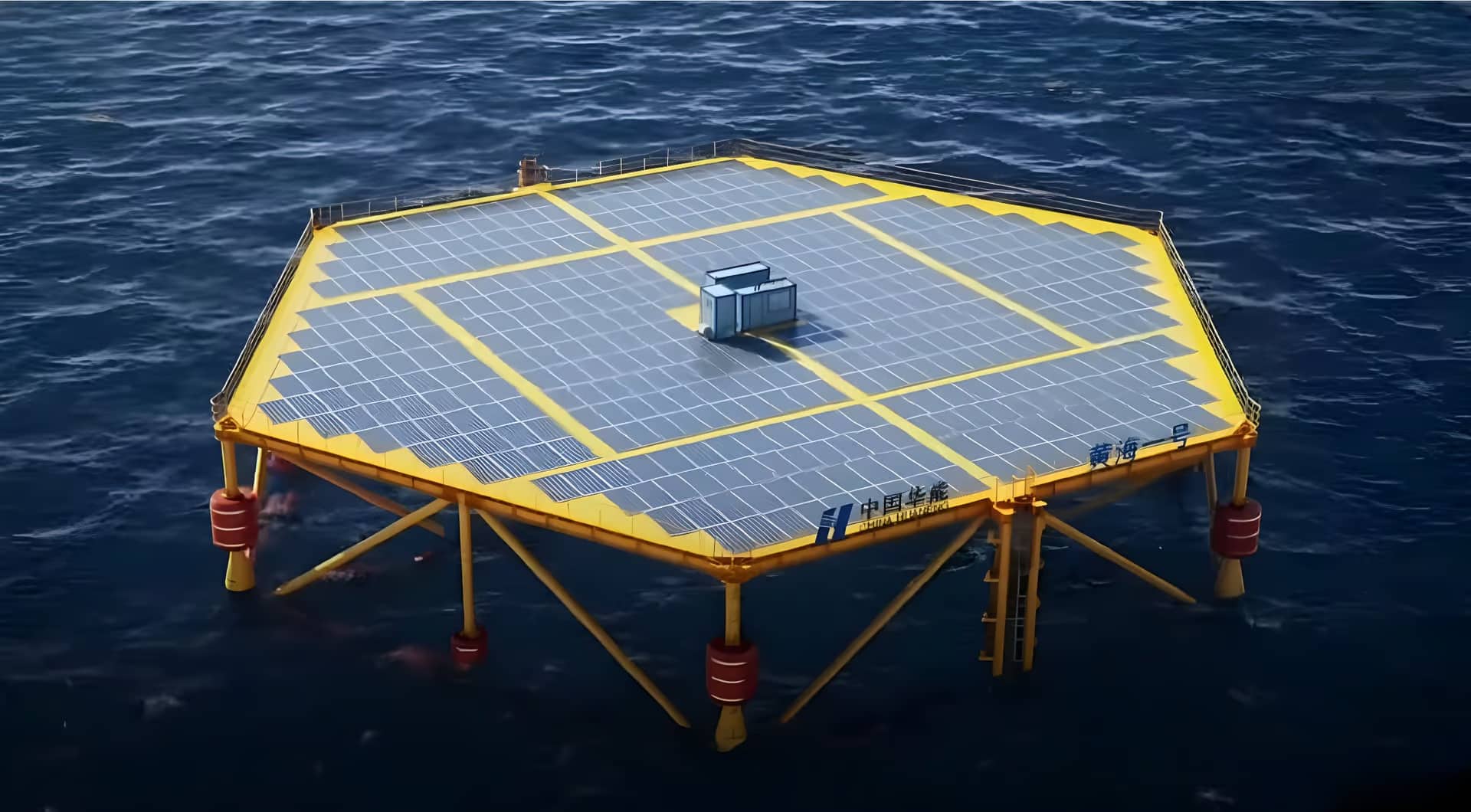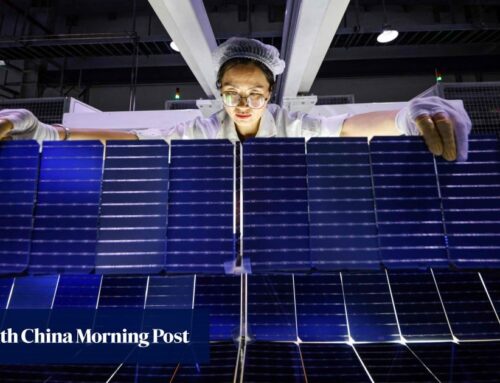Soon Photovoltaic Panels in the Middle of the Oceans?
October 31, 2024

The concept of floating solar panels in oceanic environments represents a bold step forward in the renewable energy sector. China’s pioneering effort, known as the Yellow Sea No. 1, is currently undergoing a year-long trial phase. This hexagonal platform, spanning 1,624 square meters, hosts 434 photovoltaic panels and weighs over 360 tons.
The platform’s design is a testament to engineering ingenuity :
- Hexagonal shape with 25-meter sides
- Elevated structure to prevent saltwater contact
- 64 plastic blocks for buoyancy
- Truss structure reducing weight by 25%
This innovative approach to solar energy production shares similarities with other cutting-edge marine technologies. For instance, French inventors have created amphibious boats for shallow marine exploration, demonstrating the growing interest in versatile ocean-based solutions.
Overcoming challenges in offshore solar deployment
Deploying solar panels in marine environments presents unique challenges that require innovative solutions. The Yellow Sea No. 1 platform is designed to withstand extreme maritime conditions for up to 50 years, capable of resisting waves up to 10 meters high. This resilience is crucial for ensuring the longevity and efficiency of offshore solar installations.
One of the primary concerns in marine solar deployment is the corrosive effect of saltwater on photovoltaic components. To address this issue, the platform is elevated 7.5 meters above sea level, preventing waves from reaching the solar panels even in extreme conditions. This design feature is essential for maintaining the efficiency of the solar cells and protecting the electrical systems from salt-induced degradation.
The following table illustrates the key features of the Yellow Sea No. 1 platform :
| Feature | Specification |
|---|---|
| Total height | 9 meters |
| Height above sea level | 7.5 meters |
| Wave resistance | Up to 10 meters |
| Design lifespan | 50 years |
Integration with existing offshore infrastructure
The Yellow Sea No. 1 platform has been strategically positioned 30 kilometers offshore, adjacent to an existing wind farm. This integration of solar and wind energy technologies demonstrates the potential for creating comprehensive offshore renewable energy hubs. By combining different forms of clean energy generation, these installations can maximize power output and efficiency.
The concept of integrating various renewable energy sources at sea is gaining traction globally. For example, a UK startup is using AI-powered sailboats to produce green hydrogen, showcasing the diverse approaches to harnessing ocean-based renewable energy.
Future prospects and global implications
As the Yellow Sea No. 1 project undergoes its year-long trial, researchers will closely monitor its performance, assessing factors such as wind and wave resistance, overall durability, and energy yield. The project team has planned to test various configurations, employing three different techniques and four capacity levels to evaluate efficiency and maintenance requirements.
The success of this offshore solar initiative could have far-reaching implications for the global renewable energy landscape. Some potential benefits include :
- Reduced land use for energy production
- Increased energy generation capacity
- Minimal visual impact compared to offshore wind farms
- Potential for synergies with other marine industries
As the world seeks innovative solutions to meet growing energy demands while reducing carbon emissions, floating solar farms could play a crucial role. This technology complements other sustainable energy initiatives, such as converting waste into electricity, creating a diverse portfolio of renewable energy sources.
The Yellow Sea No. 1 project represents a significant step towards harnessing the vast potential of our oceans for clean energy production. As research and development in this field continue, we may soon see a proliferation of floating solar farms across the globe, ushering in a new era of sustainable power generation on the high seas.
Search
RECENT PRESS RELEASES
Related Post



